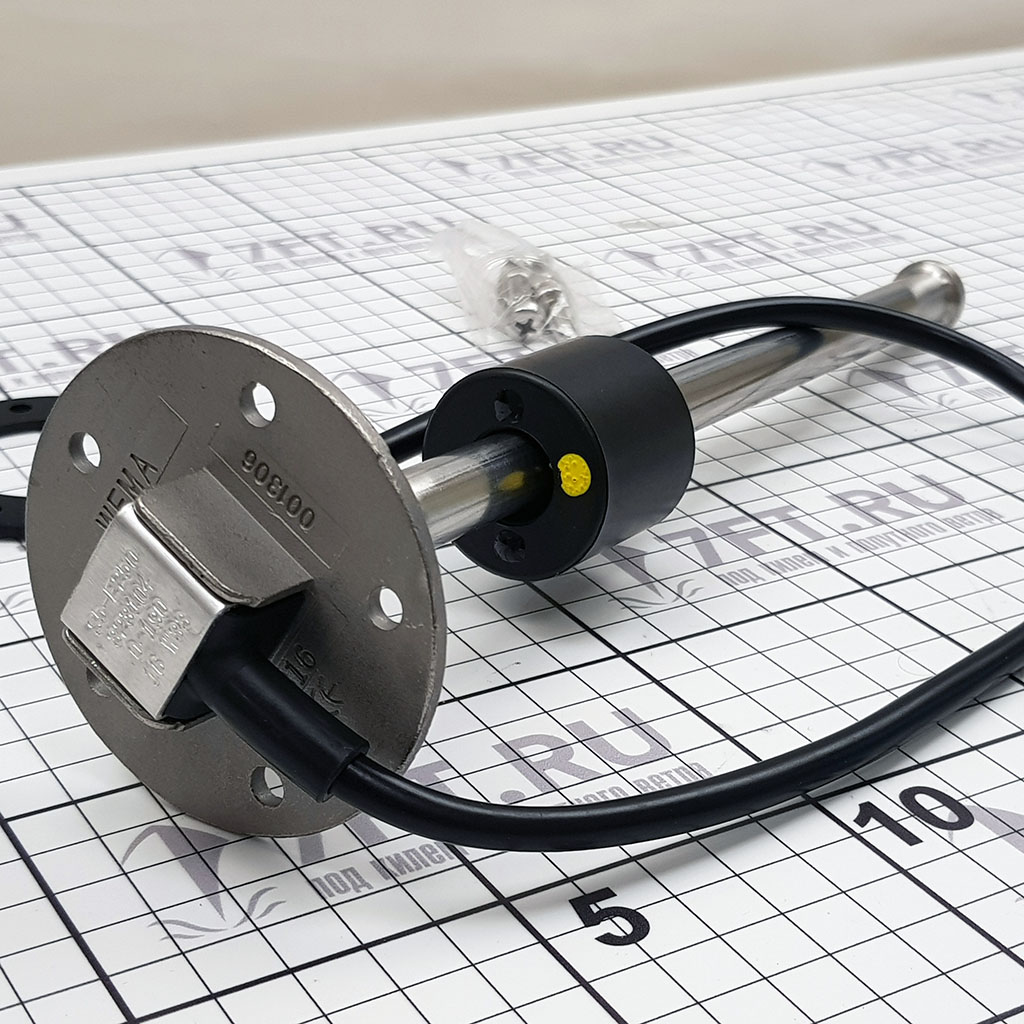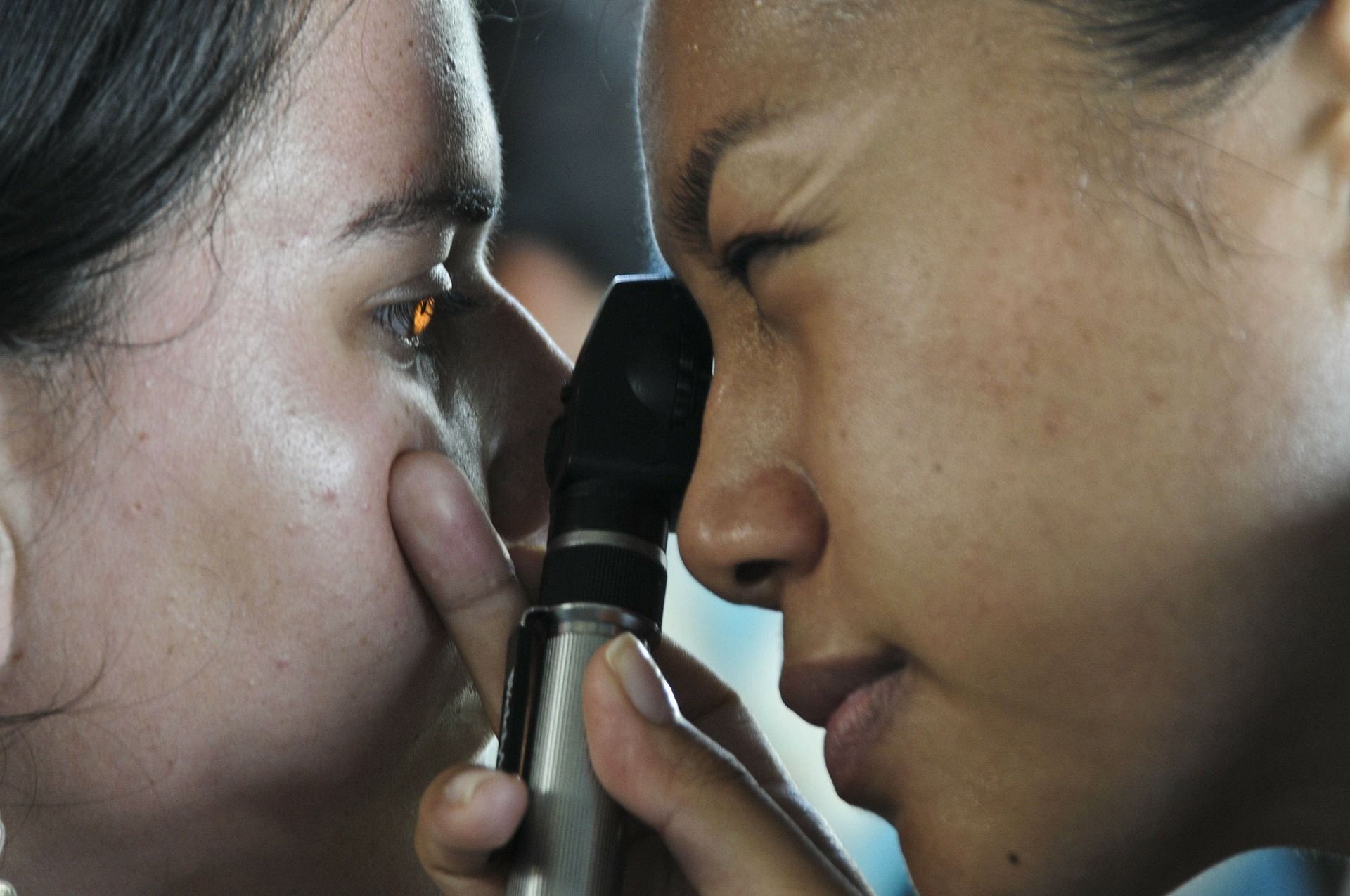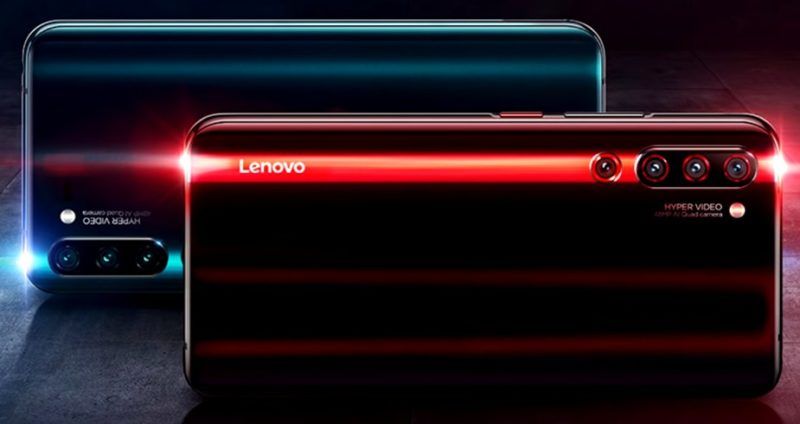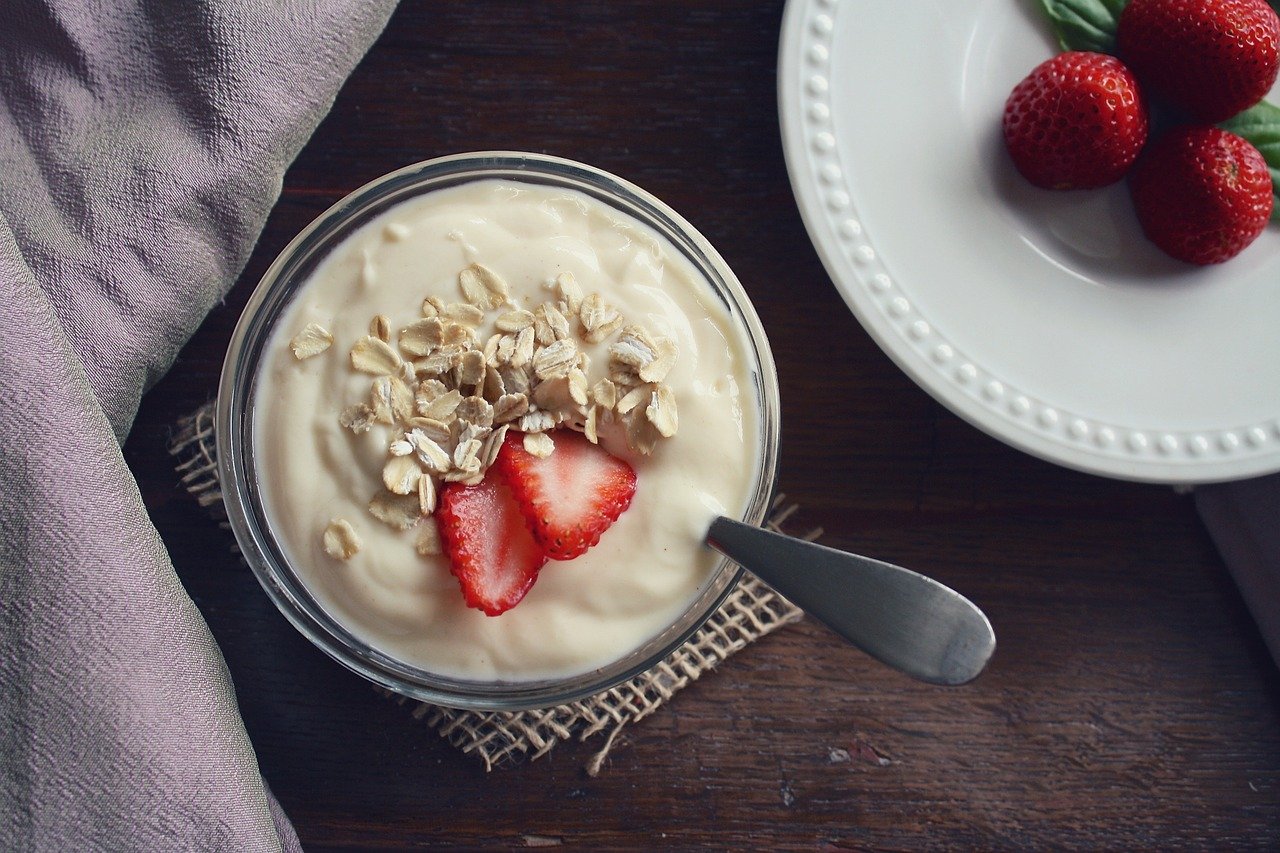Overview of the Nokia 1.3 smartphone with key features

HMD Global has unveiled an entry-level smartphone. The novelty received a 5.71-inch IPS display with a resolution of HD + 1520x720 pixels. The processor is Qualcomm QM215 (28 nm) quad-core ARM Cortex-A53.
The announcement of a new smartphone from Nokia was scheduled for the international exhibition MWC 2020. HMD Global gave the model the name Nokia 1.3. The main number of characteristics of a budget smartphone at the beginning of the year could be observed on the network.
An official source said back in January that the design of the novelty will be similar to Nokia 2.3, released in India in December of the past year.
Content [Hide]
Characteristic table
| Parameter | Meaning |
|---|---|
| network technology | GSM / HSPA / LTE |
| Dimensions | 147.3 x 71.2 x 9.4 mm (5.80 x 2.80 x 0.37 inches) |
| The weight | 155 g |
| Diagonal screen size | 5.71" |
| SIM | Single SIM (Nano-SIM) or Dual SIM (Nano-SIM, dual rack) |
| Display type | Touch screen IPS LCD capacitive |
| Screen size | 5.71 inches, 81.4 cm2 (~77.6% screen-to-body ratio) |
| Image resolution | 720 x 1520 pixels, 19:9 ratio (~295 ppi density) 400 nits typ. brightness |
| OS | Android 10.0 (Go edition), Android One |
| Chipset | Qualcomm QM215 (28nm) |
| CPU | Quad-core 1.3 GHz Cortex-A53 processor |
| GPU | Adreno 308 |
| Inner memory | 1 GB |
| External memory | 16 GB |
| Main camera | 8 MP, AF LED flash, HDR |
| Front-camera | 5 MP |
| WLAN | WiFi 802.11b/g/n, hotspot |
| Bluetooth | 4.2, A2DP, LE, aptX HD |
| GPS | with A-GPS, GLONASS, BDS |
| Radio | FM radio |
| USB | microUSB 2.0, USB On-The-Go |
| Battery | Removable Li-Po 3000 mAh battery |
| Housing materials | Polycarbonate |
| Color | Blue, Charcoal, Sand |
| NFC support | Not |
| Mobile communication technologies | UMTS (384 kbit/s) EDGE GPRS HSPA+ LTE Cat 4 (51.0 Mbit/s , 150.8 Mbit/s ) |
| SoC (System on a Chip) | Snapdragon 215 |
| Processor (CPU) | ARM Cortex-A53 |
| Processor bit depth | 64 bit |
| Instruction Set Architecture | ARMv8-A |
| Technological process | 28 nm |
| Processor clock speed | 1300 MHz |
| Type of random access memory (RAM) | LPDDR3 |
| Number of RAM channels | single channel |
| RAM frequency | 933 MHz |
| Types of memory cards | microSD microSDHC microSDXC |
| Sensors | Proximity sensor Light sensor Accelerometer |
| connector type | Micro USB |
| Connecting devices | computer sync OTA sync Tethering VoLTE |
| Browser | HTML HTML5 CSS 3 |
| Audio file formats/codecs | AAC (Advanced Audio Coding) AAC+ / aacPlus / HE-AAC v1 AMR / AMR-NB / GSM-AMR (Adaptive Multi-Rate, .amr, .3ga) eAAC+ / aacPlus v2 / HE-AAC v2 FLAC (Free Lossless Audio Codec, .flac) MIDI MP3 (MPEG-2 Audio Layer II, .mp3) OGG (.ogg, .ogv, .oga, .ogx, .spx, .opus) WMA (Windows Media Audio, .wma) WAV (Waveform Audio File Format, .wav, .wave) |
| Video file formats/codecs | 3GPP (3rd Generation Partnership Project, .3gp) AVI (Audio Video Interleaved, .avi) MKV (Matroska Multimedia Container, .mkv .mk3d .mka .mks) MP4 (MPEG-4 Part 14, .mp4, .m4a, .m4p, .m4b, .m4r, .m4v) WMV (Windows Media Video, .wmv) Xvid |
The appearance of the novelty

The first thing that catches your eye when unpacking the smartphone is a removable battery. Such a phenomenon in modern times is a rarity, because the battery can be replaced without the intervention of a service center. And this is definitely a plus. However, there are also some downsides here. To remove a SIM card or microSD, you need to remove the cover (the fasteners of which loosen over time) and remove the battery. However, if you look from the other side, then there is no need for a special key, which is indispensable in modern gadgets.
Nevertheless, the “looseness” of the cover is compensated by the presence of a spare in stores. In addition, the manufacturer took care of lovers of change. There is an opportunity to purchase a cover of a different color. The idea may be useful, but it’s not new for a long time, so you won’t surprise anyone with this.
If you do not expect too much from a state employee, for example, luxury class design, then the appearance will be quite acceptable. The Nokia 1.3, when compared to the Nokia 1, has fairly narrow bezels, which pushes it to a higher position.The case, of course, cannot be called chic, but the build quality is good, and the design is original.
The Nokia 1.3 is pleasing to the eye as well as to the touch. On the positive side, the slightly outdated design gives some personality against the background of modern gadgets. In addition, the extremely low cost is consistent with the design of the phone.
Display features
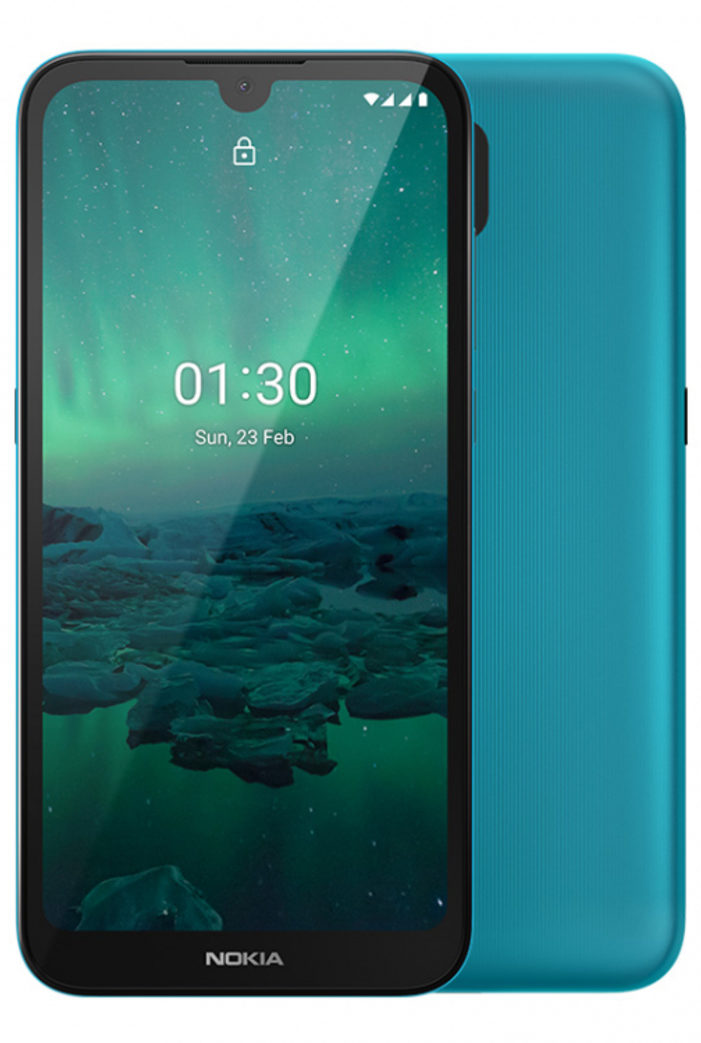
Now smartphone displays are growing inexorably. However, Nokia did not succumb to the general influence, making the screen of their creation quite small. For those who have not had time to get used to modern dimensions, this solution will be the most suitable.
But dimensional values in this case are not the most important. It is important that the image resolution of the device, to put it mildly, is not particularly impressive, and the brightness is several times inferior to the "established" parameters. However, for such a small screen, such data is not terrible.
Although the display has improved significantly compared to its predecessor, the Nokia 1, it still cannot be called excellent. However, you can't expect more from one of the most affordable smartphones in the entire line.
Speaker placement and sound quality
The speaker can be found on the rear panel at the bottom of it. The sound also cannot be called high-class, because. with loud compositions, it deteriorates noticeably. Listening to tracks is still possible, but boasting of the sound will not work. Even with headphones, recordings are not played in the best quality.
Performance and amount of memory
If the quality of the image on the display came to us from distant times, then there is certainly no need to complain about the operating system.The operation of the smartphone is driven by Android 10 with the Go modification, which makes it easier to work on devices with a weak processor. "Native" applications on the new product at least. It will not be possible to detect any third-party ones - only Google ones, and even then, not all.
On the whole, we can conclude that the manufacturer did its best to smooth out all the sharp corners of a weak processor. Nevertheless, such a focus was not successful everywhere, because anyway, the smartphone sometimes “thinks”, and switching between applications takes place in a leisurely mode.
The performance of the gadget depends on the MediaTek processor coupled with 1 GB of internal memory. The volume of the external drive was 16 GB. It is also possible to use microSD-cards up to 128 GB.
Main and front cameras
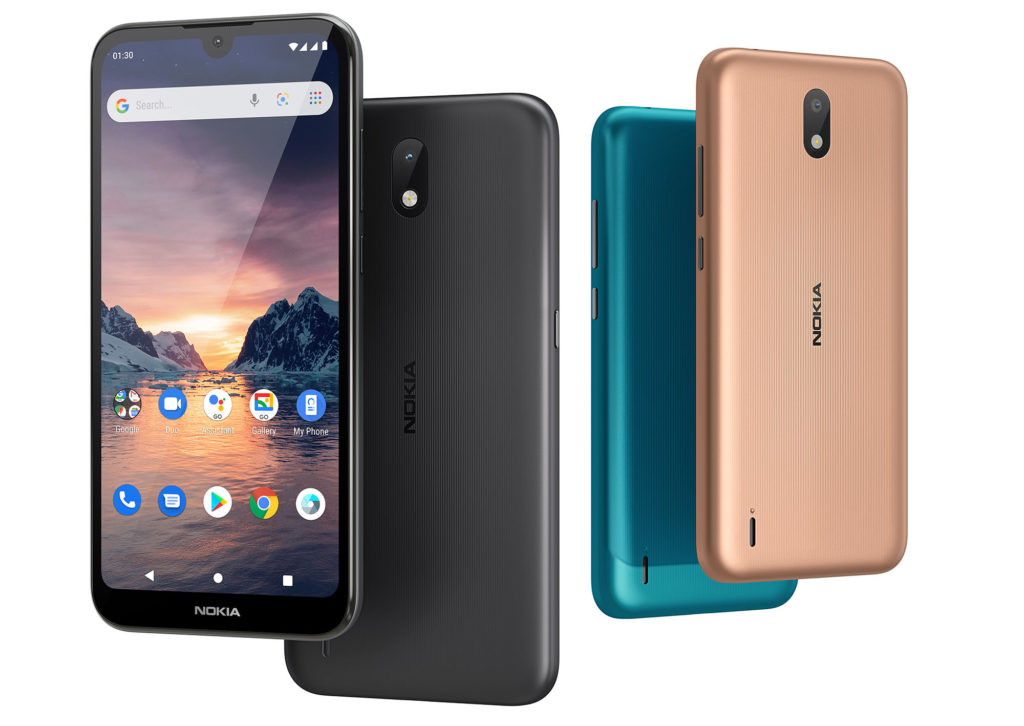
The main camera has a resolution of 8 megapixels, there is only one lens, however, the manufacturer promises good photos under normal circumstances and in low light conditions thanks to the Camera Go application. The selfie camera is 5MP and is housed in a waterdrop notch on the screen.
The quality of the photos also corresponds to the cost of the gadget. Nevertheless, unequivocal conclusions should not be drawn, because everything in this world is relative. But despite this, the quality of the images makes a reference to the early 2000s, which brings to mind the initial developments of the company, when the cameras began to approach the “normal” mark, and not “it will do.” Now these parameters are not suitable for social networks, so only the most unassuming people will be satisfied. Clarity cannot be called excellent, colors are not saturated, and there is no need to talk about night photos.Simply put, the main purpose of the cameras in Nokia 1.3 is not to take beautiful pictures, but to photograph the necessary information when necessary.
On the Internet you can find many competitions where professional photographers compete with each other in the ability to shoot with very cheap cameras. So, we can conclude that the main thing is not the quality of the device, but the skills of the photographer.
However, there is something in the model that really deserves praise. The exposure when shooting is set accurately, which sometimes you can’t achieve even from the most expensive models. Focusing is also not a problem even in low light. The frame on the first try is good, as far as it is possible for the budget category.
The camera app has only the most necessary settings, so you won't get lost in a bunch of options. This is convenient for those who find it difficult to master a large number of settings and twists.
The video shot on the Nokia 1.3 can also be praised. Clarity, of course, is not the highest. But neither focus nor stability of frames per second raises questions.
Battery Features
The battery capacity was 3000 mAh with support for slow charging of 5 W of energy, and for recharging is a micro USB port. By modern standards, the battery is weak, but taking into account the parameters of the processor, this value is quite tolerable, so the phone can be called a long-liver.
Conclusion
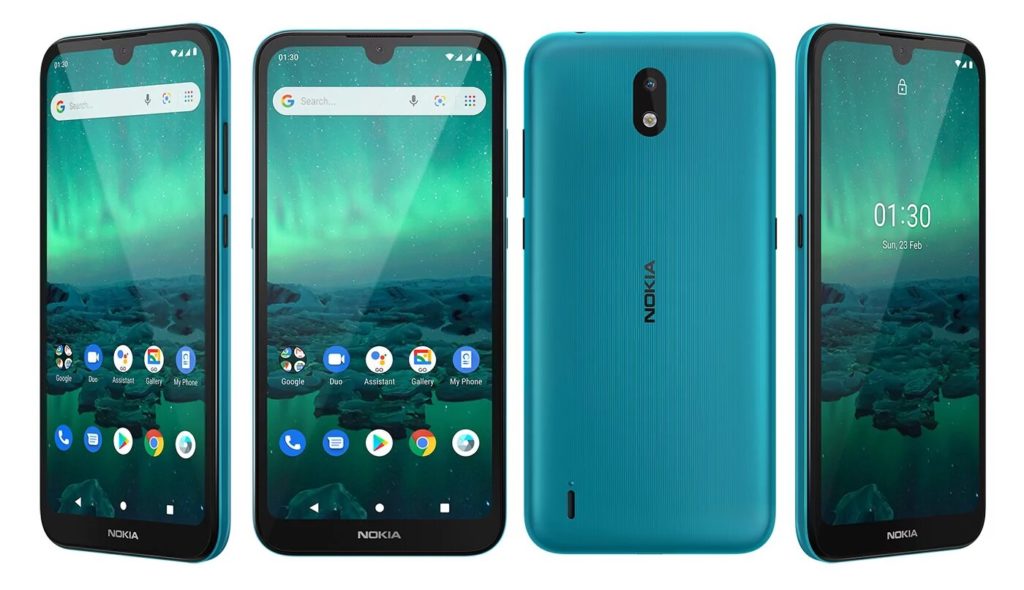
- Cute design;
- Replaceable battery;
- Acceptable autonomy.
- If you want to take a picture, you will also need to get the battery;
- Slow work;
- Weak screen resolution.
The low cost of Nokia 1.3 is the first thing to think about when buying it.The parameters are as modest as the price. The absence of unnecessary "garbage" in the form of unnecessary applications allows us to conclude that the developers tried to speed up their creation as much as possible.
Nevertheless, a small amount of memory and a weak processor teach clarity in requests and patience when waiting for answers.
The same can be said about the cameras, but there is no need to complain about the speed of their work. But the quality of the pictures leaves much to be desired.
The official introduction of the novelty to the world took place in Barcelona on February 23, 2020 as part of the MWC 2020 exhibition. The color design is available in three versions: Charcoal (charcoal), Cyan (blue) and Sand (sand). The price of the gadget was €79.
new entries
Categories
Useful
Popular Articles
-

Top ranking of the best and cheapest scooters up to 50cc in 2022
Views: 131651 -

Rating of the best soundproofing materials for an apartment in 2022
Views: 127690 -

Rating of cheap analogues of expensive medicines for flu and colds for 2022
Views: 124518 -

The best men's sneakers in 2022
Views: 124033 -

The Best Complex Vitamins in 2022
Views: 121939 -

Top ranking of the best smartwatches 2022 - price-quality ratio
Views: 114980 -

The best paint for gray hair - top rating 2022
Views: 113395 -

Ranking of the best wood paints for interior work in 2022
Views: 110318 -

Rating of the best spinning reels in 2022
Views: 105329 -

Ranking of the best sex dolls for men for 2022
Views: 104366 -

Ranking of the best action cameras from China in 2022
Views: 102215 -

The most effective calcium preparations for adults and children in 2022
Views: 102011

